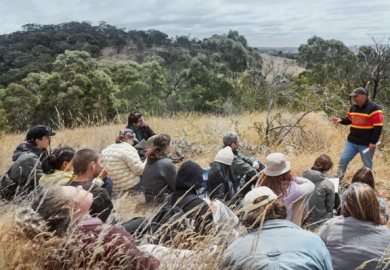Why does crying (or failure to cry) sometimes make or break political careers?
Andrea Noble, professor of Latin American studies at Durham University, first became interested in this topic when she was working on a book called Photography and Memory in Mexico: Icons of Revolution. She came across an image of the charismatic leader Pancho Villa weeping into an enormous handkerchief by the tomb of the assassinated President Francisco Madero. Why, she wondered, had “a man always associated with hypermasculinity and violence allowed himself to be photographed like that”?
Although a number of other writers have studied the history of tears and crying, few have paid much attention to Mexico or Latin America more broadly. Professor Noble, therefore, started to look at the historical evidence and soon found some striking examples.
In 1520, during a setback that preceded his ultimate triumph, Hernán Cortés sat down and cried beside a cypress tree for what became known as “la noche triste” (or night of sorrows). The autocratic 19th-century president Porfirio Díaz was known as llorón or “crybaby” because of his reaction to defeat in battle. In 1982, his successor José López Portillo wept when he announced the country’s bankruptcy.
A large segment of Mexican history, explained Professor Noble, is dominated by “the complex process of achieving independence from Spain and forging a new national culture, with different groups having to make common cause”.
All of this can be tracked partly through changing displays of emotion, which offer revealing insights into assumptions about class, gender, morality and ethnicity. One 19th-century cartoon depicts a series of good and bad orators. As one goes down the line from bad to worse, the speakers get more and more melodramatically emotional – and more and more dark-skinned.
Issues around crying remain very much alive today. Professor Noble secured a Marie Curie Outgoing Fellowship from the European Commission, which has allowed her to spend two years at the National Autonomous University of Mexico.
This has given her access to essential archives and a better sense of how emotions are expressed in everyday Mexican life. She has also been able to follow how “the current president, Enrique Peña Nieto, and his government have got things emotionally very wrong”.
During his 2012 campaign, he welled up on Father’s Day while reflecting on how his own father had not lived to witness his success. More recently, says Professor Noble, he has been attacked for his coldness at a time of “unprecedented emotion about the 43 students kidnapped and killed at Iguala in 2014”, leading to “massive demonstrations and people indignant both at the events and the government’s response to them”.
Tears may dry fast, yet Professor Noble’s research is revealing just how deep their political impact can go.
Register to continue
Why register?
- Registration is free and only takes a moment
- Once registered, you can read 3 articles a month
- Sign up for our newsletter
Subscribe
Or subscribe for unlimited access to:
- Unlimited access to news, views, insights & reviews
- Digital editions
- Digital access to THE’s university and college rankings analysis
Already registered or a current subscriber?





